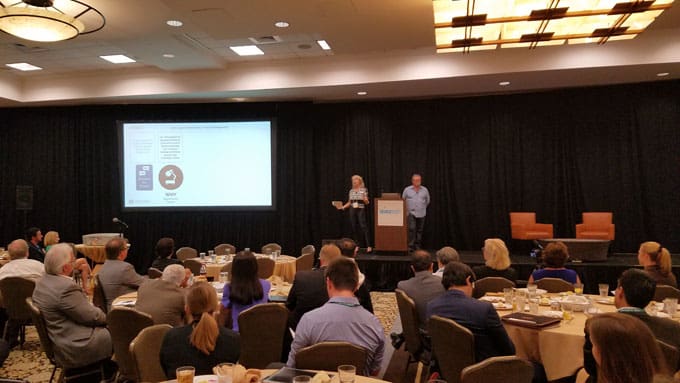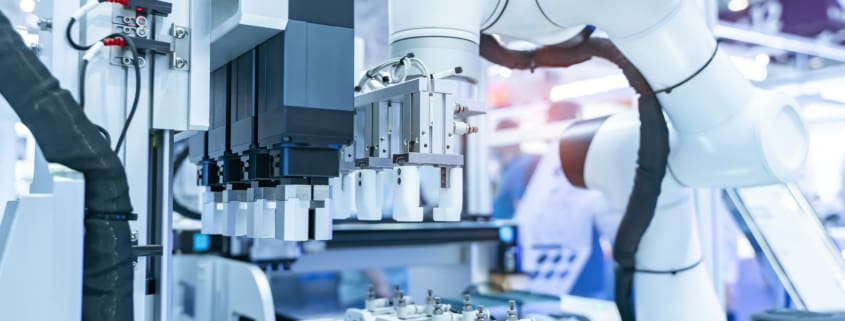Critical Design Thinking in the Development of Medical Devices; “Funky” Does Not Mean Easy to Use
 Medical devices are becoming a part of our everyday lives, whether to monitor, diagnose, or predict the likelihood of a disease or illness, or prevent it through healthy habits. To serve the growing number of device designers, engineers, and manufacturers in the San Diego region, BIOCOM held its annual Medical Device and Diagnostics Conference, DeviceFest 2016 on August 30 at the Sheraton Carlsbad Resort & Spa. DDSTUDIO was privileged to be entrusted with the “wake-up” after lunch session. Standing out amongst weighty sessions on regulatory issues, funding vehicles and digital health technologies, Charles Curbbun and Tracy Manning led a spirited discussion on human-centered design that reminded conference attendees about the needs of the real people who use medical devices and technologies and depend on them for a healthy life.
Medical devices are becoming a part of our everyday lives, whether to monitor, diagnose, or predict the likelihood of a disease or illness, or prevent it through healthy habits. To serve the growing number of device designers, engineers, and manufacturers in the San Diego region, BIOCOM held its annual Medical Device and Diagnostics Conference, DeviceFest 2016 on August 30 at the Sheraton Carlsbad Resort & Spa. DDSTUDIO was privileged to be entrusted with the “wake-up” after lunch session. Standing out amongst weighty sessions on regulatory issues, funding vehicles and digital health technologies, Charles Curbbun and Tracy Manning led a spirited discussion on human-centered design that reminded conference attendees about the needs of the real people who use medical devices and technologies and depend on them for a healthy life.
Human Centered Design and Design Thinking in the Medical Device Development Process drive a higher return on investment. Design Thinking makes a device easier to use and more efficient. At least as important as the greater efficiency and efficacy, are the intangibles that drive acceptance. People interact better with devices they want to use and feel comfortable using. Design Thinking in medical device development places a priority on the interaction of an individual with the device.
The presentation included several successful development projects with leading device manufacturers such as TrueMed and Synthetic Genomics, and showed how product teams effectively incorporated the Design Thinking Process in their commercialization roadmaps.
 “It is no longer enough to have a ‘space age’ enclosure with digital readouts facing every direction,” according to Charles. “Making it look futuristic does not make it easier to use. We must work to delight users and help them feel that their contributions are critical to success. When people actively enjoy using the tools they have to do their jobs, they do better work. Better work means fewer mistakes, more thorough execution and as a result a more profitable outcome.”
“It is no longer enough to have a ‘space age’ enclosure with digital readouts facing every direction,” according to Charles. “Making it look futuristic does not make it easier to use. We must work to delight users and help them feel that their contributions are critical to success. When people actively enjoy using the tools they have to do their jobs, they do better work. Better work means fewer mistakes, more thorough execution and as a result a more profitable outcome.”
Design Thinking begins with a deep understanding of what the client wants to accomplish. Products should reflect the visual brand language of the client, an expression to the customer of image, feel, thoughts and value. The goal is to simplify product development by focusing on objectives and desires that are important to the users of the product:
- Approachable
- Intuitive
- Ready to use quickly
- Different levels of controls for different users
- Consistent and repeatable
Another important consideration is product esthetic. Medical device companies can be well ahead of the competition in technology and lose the battle in the market if they don’t delight the consumer. Consumers are used to the slick feel and functionality of smartphones, and they don’t tolerate anything less from state-of-the-art medical equipment. Meeting this demand requires a deep understanding of the user journey. Using ethnographic research, designers observe users in their environment to gain empathy and discover unmet needs and opportunities.
Startups should consider and invest time in Design Thinking activities even during the Minimum Viable Product (MVP) phase of development. An MVP may do only few things, but it needs to do them very well, so the user is delighted. Otherwise a startup can spend all of its resources chasing user experience issues during the early development phase and there will be low adoption. Charles spoke from experience when he explained to the audience that they used to approach design programs by thinking about what they wanted to start off with, doing that, then justifying what they had done with research. Today, with Design Thinking and involving the user in the design process, there are more predictable outcomes.
Wrapping up the presentation, Charles and Tracy emphasized the urgency of adopting critical Design Thinking into the design process whether for medical devices or any other products. “We [Users] are much less patient now when something doesn’t respond” said Charles. The continuing escalation in user expectations creates a market environment where companies that invest in design will win in the market.




